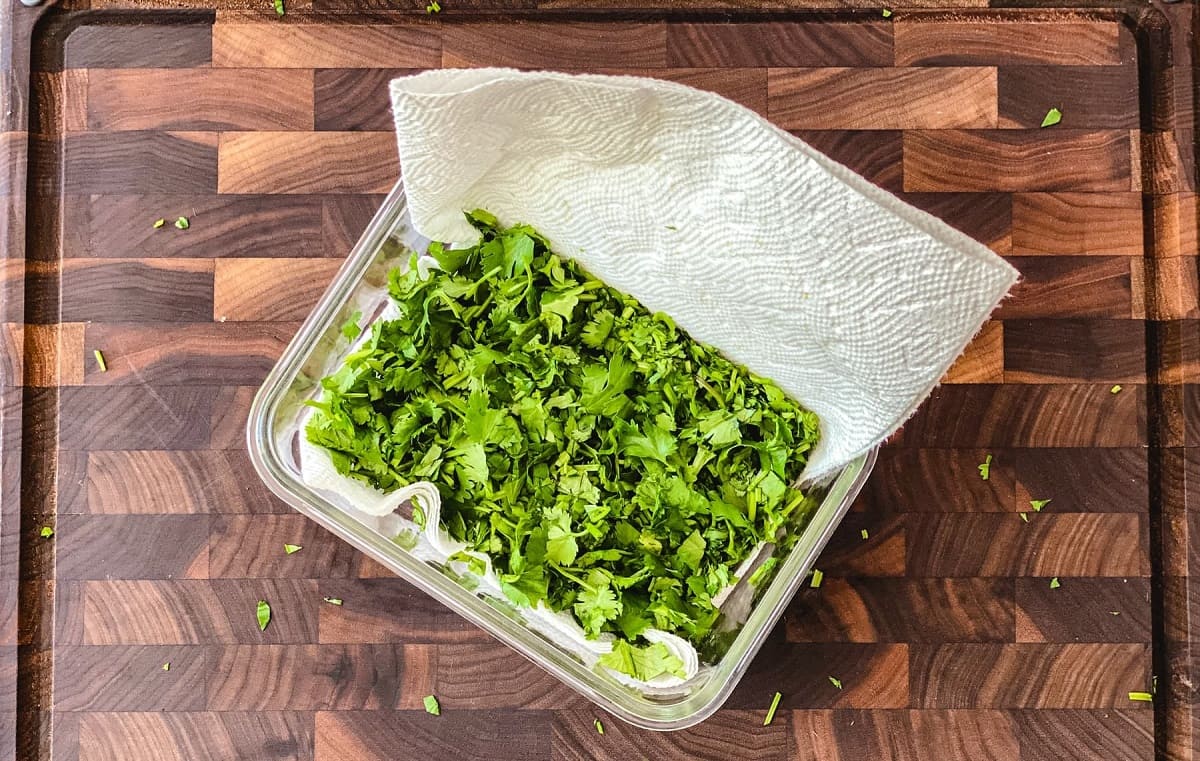

Articles
How To Store Chopped Cilantro
Modified: December 7, 2023
Learn the best techniques for storing chopped cilantro with our informative articles. Keep your cilantro fresh and flavorful for longer periods.
(Many of the links in this article redirect to a specific reviewed product. Your purchase of these products through affiliate links helps to generate commission for Storables.com, at no extra cost. Learn more)
Introduction
Cilantro, also known as coriander, is a versatile herb that is widely used in various cuisines around the world. It adds a fresh and vibrant flavor to dishes, making it a popular choice for garnishing, marinades, salsas, and more. However, cilantro can lose its flavor and texture quickly if not stored properly. In this article, we will explore the importance of storing chopped cilantro correctly and provide you with the best practices to keep it fresh for longer.
Proper storage of chopped cilantro is essential to maintain its flavor, aroma, and nutritional value. When cilantro is exposed to air, light, and moisture, it can start to degrade rapidly, leading to wilting, browning, and loss of flavor. By employing the right storage techniques, you can extend the shelf life of chopped cilantro and preserve its freshness and vibrant green color.
Below, we will discuss the best practices for storing chopped cilantro, including refrigeration, freezing, preserving in oil, and drying. Each method has its own benefits and is suitable for different culinary scenarios. By understanding these options, you can choose the right approach based on your needs and ensure that you always have fresh cilantro on hand for your favorite recipes.
Key Takeaways:
- Proper storage of chopped cilantro is crucial to maintain its flavor, color, and texture, ensuring it enhances the taste of your dishes and stays fresh for longer.
- Refrigeration, freezing, preserving in oil, and drying are effective methods for storing chopped cilantro, offering versatility and convenience for different culinary needs.
Read more: How To Store Cilantro
Why is proper storage important?
Proper storage of chopped cilantro is crucial for several reasons. First and foremost, it helps to preserve the herb’s flavor and aroma. Cilantro, known for its bright and zesty taste, can quickly lose its potency if not stored correctly. By keeping it fresh, you ensure that it enhances the flavors of your dishes, adding that distinct cilantro kick.
In addition to flavor, proper storage also helps maintain the vibrant green color of cilantro. When exposed to air and light, cilantro can oxidize and turn brown, losing its appealing appearance. By storing it properly, you can retain its beautiful green hue, making your presentations more visually appealing.
Another important reason for proper storage is preventing wilting and spoilage. Cilantro is a delicate herb, and when not stored correctly, it can wilt quickly, becoming limp and unappetizing. Additionally, improper storage can accelerate bacterial growth, leading to spoilage and potential foodborne illnesses. By following the correct storage methods, you can extend the shelf life of cilantro and reduce food waste.
Moreover, proper storage enables you to have cilantro readily available whenever you need it. Whether you use it frequently in your cooking or prefer to have it on hand for garnishing or adding a pop of freshness to your dishes, properly stored cilantro ensures that you always have a supply at your fingertips. This can save you time, energy, and trips to the grocery store.
Lastly, proper storage allows you to take advantage of sales or buy cilantro in bulk and store it for future use. If you come across a great deal on fresh cilantro or want to stock up during its peak season, knowing how to store it properly ensures that you can enjoy the herb’s benefits long after your purchase.
In summary, proper storage of chopped cilantro is essential to preserve its flavor, maintain its vibrant green color, prevent wilting and spoilage, have it readily available, and take advantage of sales or bulk purchases. By implementing the right storage methods, you can maximize the longevity and quality of your cilantro, enhancing your culinary experiences.
Best practices for storing chopped cilantro
To ensure that your chopped cilantro stays fresh and flavorful, it’s important to follow these best practices for storage:
- Start with fresh cilantro: Begin the storage process with fresh and high-quality cilantro. Look for bunches with vibrant green leaves, firm stems, and a fragrant aroma. Avoid cilantro that is already wilted, yellowing, or has a strong odor.
- Trim the stems: Before chopping the cilantro, trim the bottom ends of the stems, removing any discolored or slimy parts. This will help prolong the freshness of the herb.
- Wash and dry: Thoroughly wash the cilantro under cold running water to remove any dirt or debris. Gently pat it dry with a clean kitchen towel or use a salad spinner to remove excess moisture. Ensure that the cilantro is completely dry before proceeding with the storage methods.
- Choose the right storage container: Use an airtight container or a plastic bag specifically designed for storing herbs. You can also use glass containers, making sure they have tight-fitting lids. The container should be clean and dry, with enough space to accommodate the chopped cilantro without overcrowding.
- Line the container: Line the container with a slightly damp paper towel or a clean, dry cloth. This helps create a slightly humid environment that prevents wilting without making the cilantro excessively damp.
- Chop before storing: It’s best to chop the cilantro right before storing it. This helps maintain its freshness and flavor. Avoid chopping it too finely, as this can accelerate wilting.
- Store in the refrigerator: The refrigerator is the most common and convenient storage option for chopped cilantro. Place the chopped cilantro in the lined container, seal it tightly, and store it in the refrigerator’s crisper drawer. This helps maintain a cool and stable temperature, extending the shelf life of the herb.
- Label and date: To avoid confusion and ensure that you use the cilantro within its optimal time frame, label the storage container with the date of chopping.
- Use within a week: Chopped cilantro stored in the refrigerator can stay fresh for up to a week. However, for the best flavor and quality, it’s recommended to use the cilantro within the first few days.
- Consider alternative storage methods: If you have a surplus of chopped cilantro or want to store it for a longer period, you can explore alternative storage methods like freezing, preserving in oil, or drying. These methods will be discussed in detail in the following sections.
By following these best practices, you can ensure that your chopped cilantro stays fresh, flavorful, and ready to elevate your culinary creations.
Option 1: Refrigerating chopped cilantro
Refrigeration is one of the most common and effective methods for storing chopped cilantro. Follow these steps to refrigerate your cilantro:
- Prepare the cilantro: Start by washing the cilantro thoroughly under cold running water to remove any dirt or debris. Gently pat it dry with a clean kitchen towel or use a salad spinner to remove excess moisture. Make sure the cilantro is completely dry before proceeding.
- Chop the cilantro: Chop the cilantro to your desired consistency. Avoid chopping it too finely, as this can accelerate wilting.
- Line the container: Use an airtight container or a plastic bag designed for storing herbs. Line the container with a slightly damp paper towel or a clean, dry cloth to create a slightly humid environment that prevents wilting.
- Transfer the chopped cilantro: Place the chopped cilantro in the lined container. Ensure that the cilantro is not overcrowded, allowing air to circulate and maintain its freshness.
- Seal and store: Seal the container tightly to prevent air and moisture from entering. Place the container in the refrigerator’s crisper drawer, which provides a cool and stable temperature.
- Label and date: To keep track of the cilantro’s freshness, label the container with the date of chopping.
- Use within a week: Chopped cilantro stored in the refrigerator can stay fresh for up to a week. However, for the best flavor and quality, it’s recommended to use the cilantro within the first few days.
Refrigerating chopped cilantro helps maintain its freshness and vibrant green color. However, it’s important to note that cilantro is a delicate herb, and even with proper refrigeration, it may still wilt or lose some of its flavor over time. To prevent waste, it’s advisable to chop only the amount of cilantro you need for immediate use.
Remember to check the cilantro periodically during storage. If you notice any signs of wilting or decaying, remove the affected parts and use the remaining fresh cilantro as soon as possible.
Refrigeration is a convenient and simple method for storing chopped cilantro, allowing you to have it readily available for various dishes and recipes.
Store chopped cilantro in a sealed container with a paper towel to absorb excess moisture. Keep it in the refrigerator and change the paper towel every few days to keep it fresh longer.
Option 2: Freezing chopped cilantro
Another effective method for storing chopped cilantro is freezing. Freezing cilantro allows you to extend its shelf life and have a ready supply on hand for future use. Here’s how to freeze chopped cilantro:
- Prepare the cilantro: Start by washing the cilantro thoroughly under cold running water to remove any dirt or debris. Gently pat it dry with a clean kitchen towel or use a salad spinner to remove excess moisture. Ensure that the cilantro is completely dry before proceeding.
- Chop the cilantro: Chop the cilantro to your desired consistency. Finely chopped cilantro is more versatile and easier to incorporate into various dishes.
- Blanch the cilantro: Blanching the cilantro helps preserve its color, flavor, and texture. Bring a pot of water to a boil and prepare an ice bath by filling a bowl with ice and water. Drop the chopped cilantro into the boiling water for around 10 to 20 seconds, then quickly transfer it to the ice bath to stop the cooking process. Drain the cilantro and pat it dry.
- Portion and pack: Divide the blanched and dried cilantro into small portions. You can use ice cube trays or small freezer-safe containers to portion out individual servings. Alternatively, you can use freezer bags, squeezing out as much air as possible before sealing.
- Label and date: To keep track of the cilantro, label each portion or container with the date of freezing.
- Freeze: Place the portioned cilantro or sealed containers in the freezer. Make sure they are laid flat to prevent them from sticking together.
- Use within six months: Chopped cilantro can be stored in the freezer for up to six months. While it may still be safe to consume after this period, the flavor and quality may deteriorate over time.
When you need cilantro for a recipe, simply remove the desired portion from the freezer and add it directly to your dish. There is no need to thaw the cilantro beforehand, as it will quickly defrost in the heat of your cooking.
Freezing chopped cilantro is a convenient method for preserving its flavor and versatility. It allows you to have cilantro readily available in your freezer, making it easy to add a burst of freshness to your culinary creations throughout the year.
Read more: How To Store Cilantro In Freezer
Option 3: Preserving chopped cilantro in oil
Preserving chopped cilantro in oil is a fantastic method for adding flavor to your dishes while keeping the herb fresh and accessible. Here’s how to preserve chopped cilantro in oil:
- Prepare the cilantro: Begin by washing the cilantro thoroughly under cold running water to remove any dirt or debris. Gently pat it dry with a clean kitchen towel or use a salad spinner to remove excess moisture. Ensure that the cilantro is completely dry before proceeding.
- Chop the cilantro: Chop the cilantro to your desired consistency. Finely chopped cilantro works well for preserving in oil.
- Choose an oil: Select a high-quality oil with a neutral flavor, such as olive oil, canola oil, or vegetable oil. Avoid oils with strong flavors that may overpower the taste of the cilantro.
- Sterilize a glass jar: Wash a glass jar with a tight-fitting lid in hot soapy water, rinse thoroughly, and dry it completely. You can also sterilize the jar by placing it in boiling water for a few minutes.
- Layer the jar: Place a layer of chopped cilantro at the bottom of the jar. Drizzle a small amount of oil to cover the cilantro. Repeat this process, layering the cilantro and oil until the jar is filled, leaving some space at the top.
- Press out air bubbles: Use a spoon or the back of a knife to press down gently on the cilantro and oil layers to remove any air bubbles.
- Seal and store: Ensure that the cilantro is fully submerged in the oil, then tightly seal the jar. Store it in the refrigerator to keep the cilantro fresh and prevent microbial growth.
- Use within a month: Preserved chopped cilantro in oil can last for about a month in the refrigerator. It’s important to check for any signs of spoilage or off flavors before using it.
When you need to use the preserved cilantro, simply spoon out the desired amount, along with some oil, and add it to your dishes. The oil helps infuse the flavor of the cilantro into your recipes, adding a delightful taste to your cooking.
Preserving chopped cilantro in oil is a great way to have the herb readily available while imparting a burst of fresh flavor to your dishes. It enhances the taste of various cuisines, including salads, stir-fries, marinades, dressings, and more.
Option 4: Drying chopped cilantro
Drying chopped cilantro is an excellent way to preserve the herb for an extended period. Dried cilantro can be used in various dishes, adding a delightful flavor. Here’s how to dry chopped cilantro:
- Prepare the cilantro: Start by washing the cilantro thoroughly under cold running water to remove any dirt or debris. Gently pat it dry with a clean kitchen towel or use a salad spinner to remove excess moisture. Make sure the cilantro is completely dry before proceeding.
- Chop the cilantro: Chop the cilantro into small pieces. Finely chopped cilantro dries more quickly and evenly.
- Option 1: Air drying: Place the chopped cilantro on a clean, dry surface, such as a baking sheet or a wire rack. Allow it to air dry in a cool, well-ventilated area. Stir the cilantro occasionally to ensure even drying. This method can take up to one to two weeks, depending on the humidity level.
- Option 2: Oven drying: Preheat your oven to the lowest temperature setting. Line a baking sheet with parchment paper and spread the chopped cilantro evenly. Place the baking sheet in the oven and leave the oven door slightly ajar to allow moisture to escape. Check on the cilantro regularly and stir to ensure even drying. This method typically takes a few hours to overnight, depending on the moisture content.
- Check for dryness: The cilantro is considered dry when the leaves are brittle and crumble easily with gentle pressure.
- Store the dried cilantro: Once the cilantro is completely dry, transfer it to an airtight container or a glass jar with a tight-fitting lid. Store it in a cool, dark place away from direct sunlight.
- Use within a year: Properly dried cilantro can be stored for up to a year. However, its flavor and aroma will gradually diminish over time, so it’s best to use it within the first few months for the best quality.
When using dried cilantro in your recipes, remember that its flavor is more concentrated than fresh cilantro. Start with small amounts and adjust according to your taste preferences.
Dried cilantro adds a delightful taste to soups, stews, marinades, spice blends, and other dishes. Its availability throughout the year makes it a convenient option when fresh cilantro is not readily accessible.
By drying chopped cilantro, you can enjoy the herb’s flavors and nutritional benefits even when it’s out of season.
Conclusion
Properly storing chopped cilantro is essential to preserve its flavor, color, and texture. Whether you choose to refrigerate, freeze, preserve in oil, or dry your cilantro, each method offers its own benefits and allows you to enjoy the herb’s freshness for an extended period.
Refrigeration is a convenient option for short-term storage, keeping the chopped cilantro fresh for up to a week. Freezing is an excellent method for preserving cilantro for longer periods, allowing you to have a ready supply in your freezer. Preserving chopped cilantro in oil adds flavor and versatility to your dishes, while drying cilantro offers a convenient way to use it throughout the year, even when it’s not in season.
Remember to choose fresh cilantro, trim the stems, wash and dry the leaves thoroughly, and store them in appropriate containers to maintain their quality. Labeling and dating the containers will help you keep track of the cilantro’s freshness, ensuring that you use it within the recommended storage time.
By implementing these best practices for storing chopped cilantro, you can maximize its flavor and nutritional value, minimize waste, and always have this vibrant herb on hand to elevate your culinary creations. Whether you’re garnishing a dish, spicing up a marinade, or adding a fresh touch to a salsa, properly stored chopped cilantro will enhance the flavors of your favorite recipes and bring a burst of freshness to your meals.
Experiment with different storage methods to find the one that suits your needs and preferences. Stock your pantry, refrigerator, or freezer with preserved cilantro so that you can easily access the herb whenever you need it. With proper storage techniques, you can enjoy the vibrant taste and aroma of cilantro in your dishes for a long time to come.
Frequently Asked Questions about How To Store Chopped Cilantro
Was this page helpful?
At Storables.com, we guarantee accurate and reliable information. Our content, validated by Expert Board Contributors, is crafted following stringent Editorial Policies. We're committed to providing you with well-researched, expert-backed insights for all your informational needs.
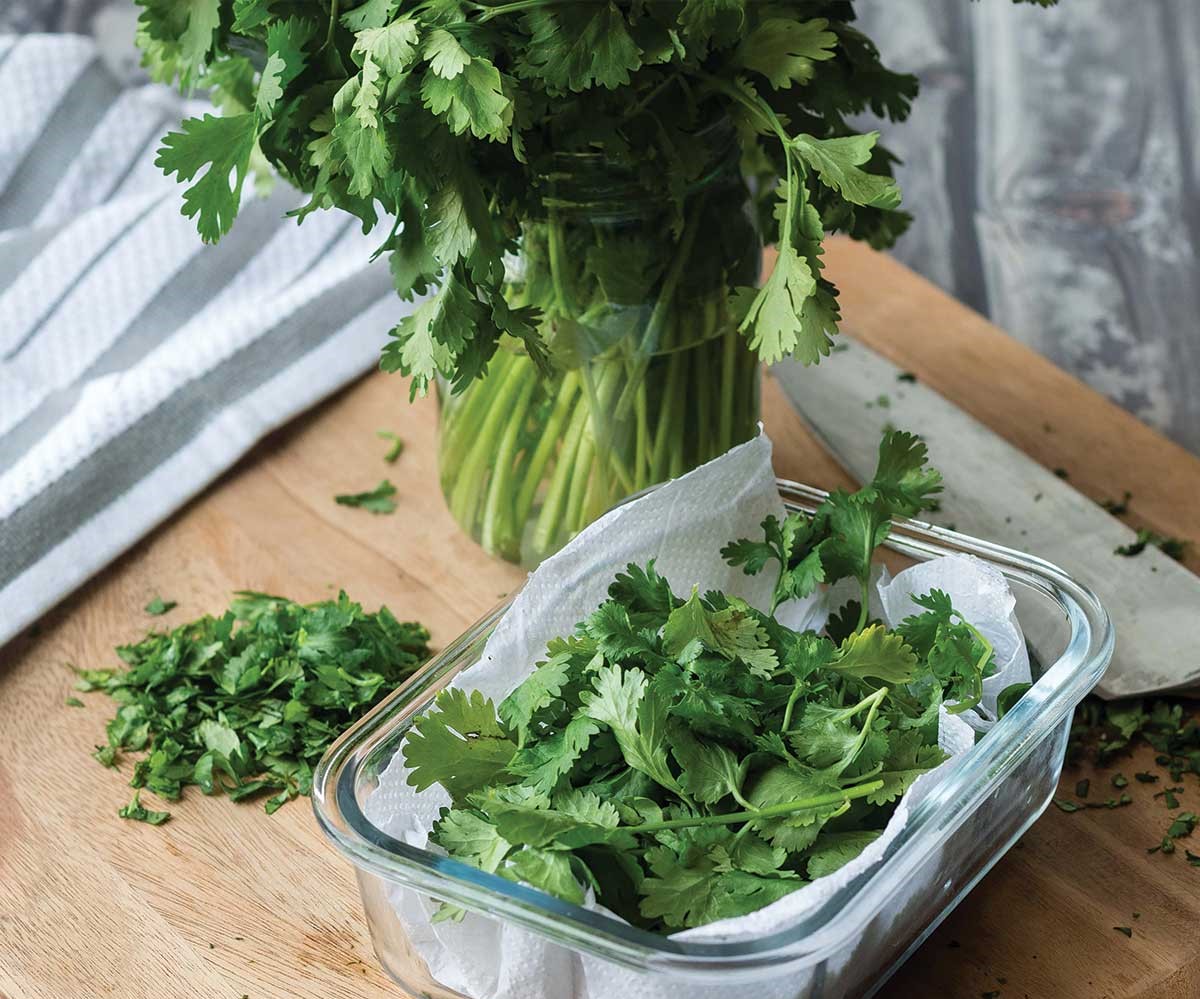
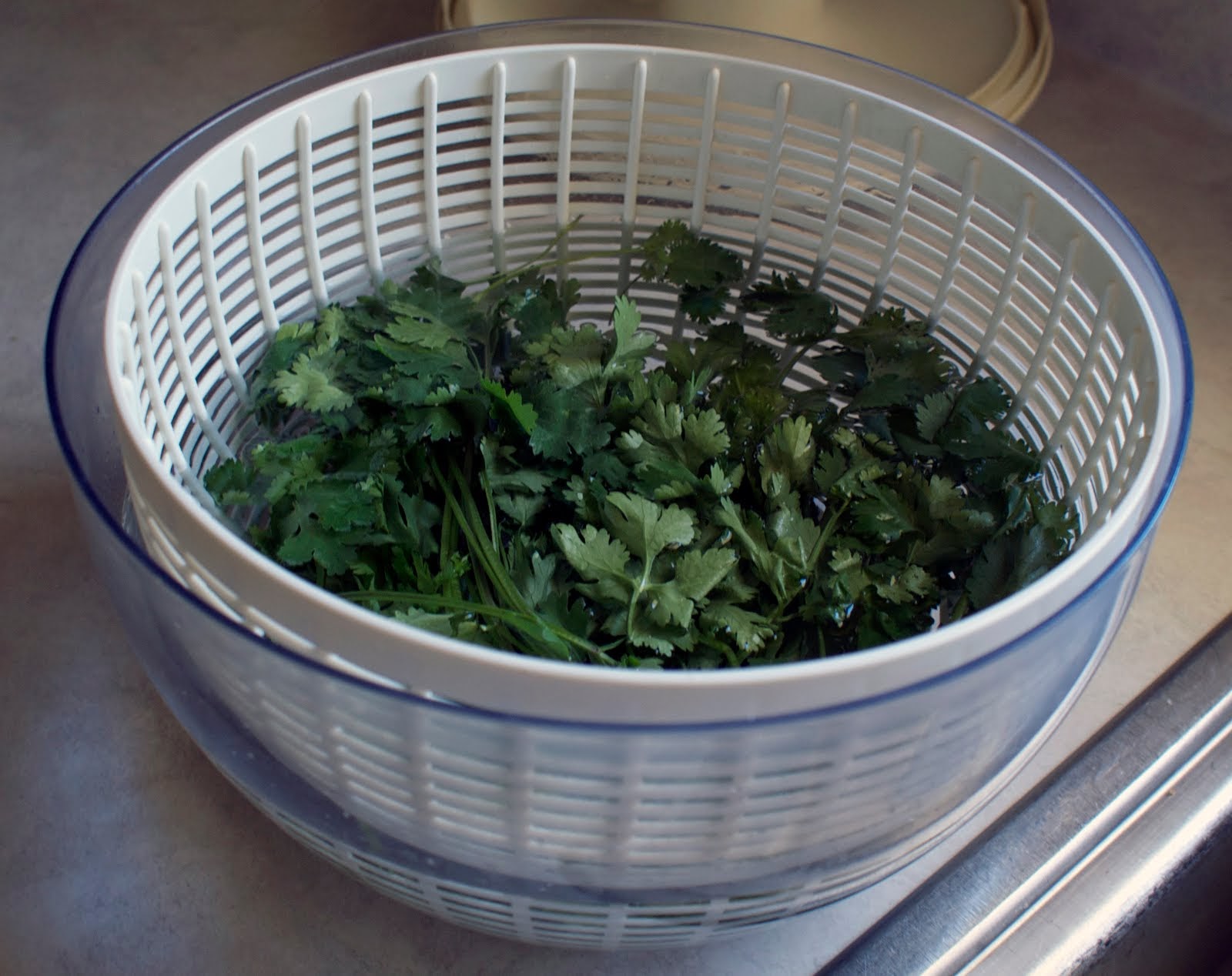
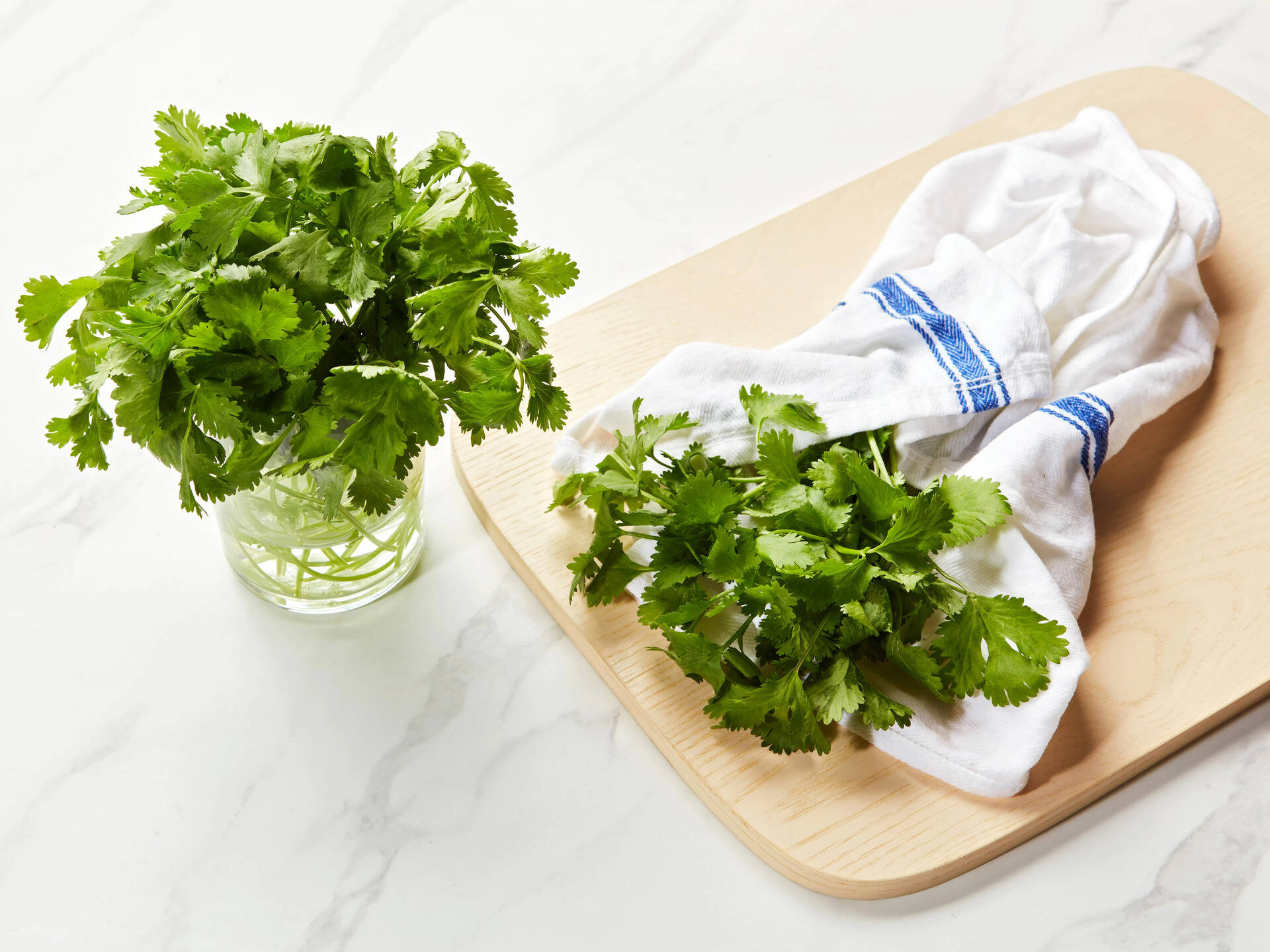
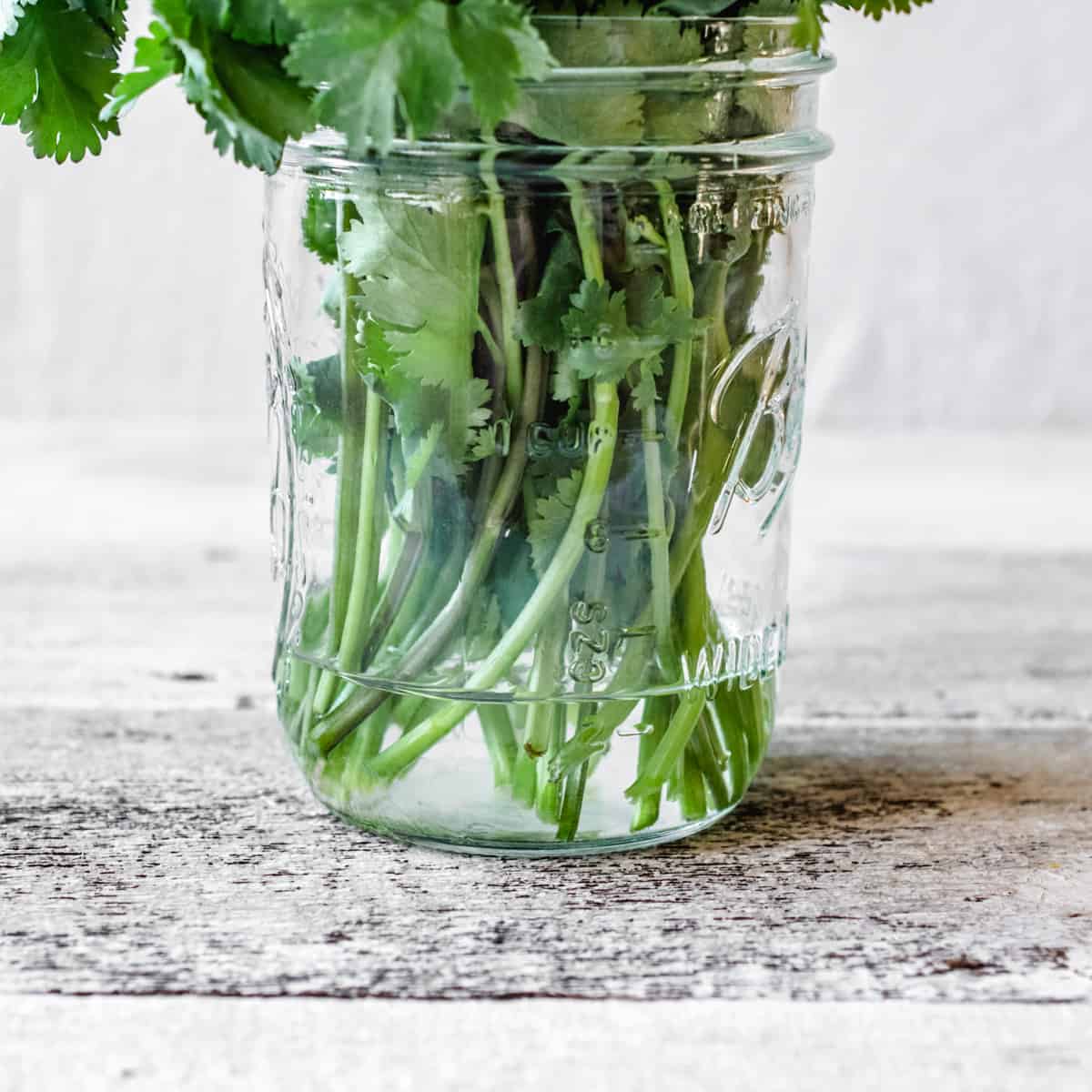
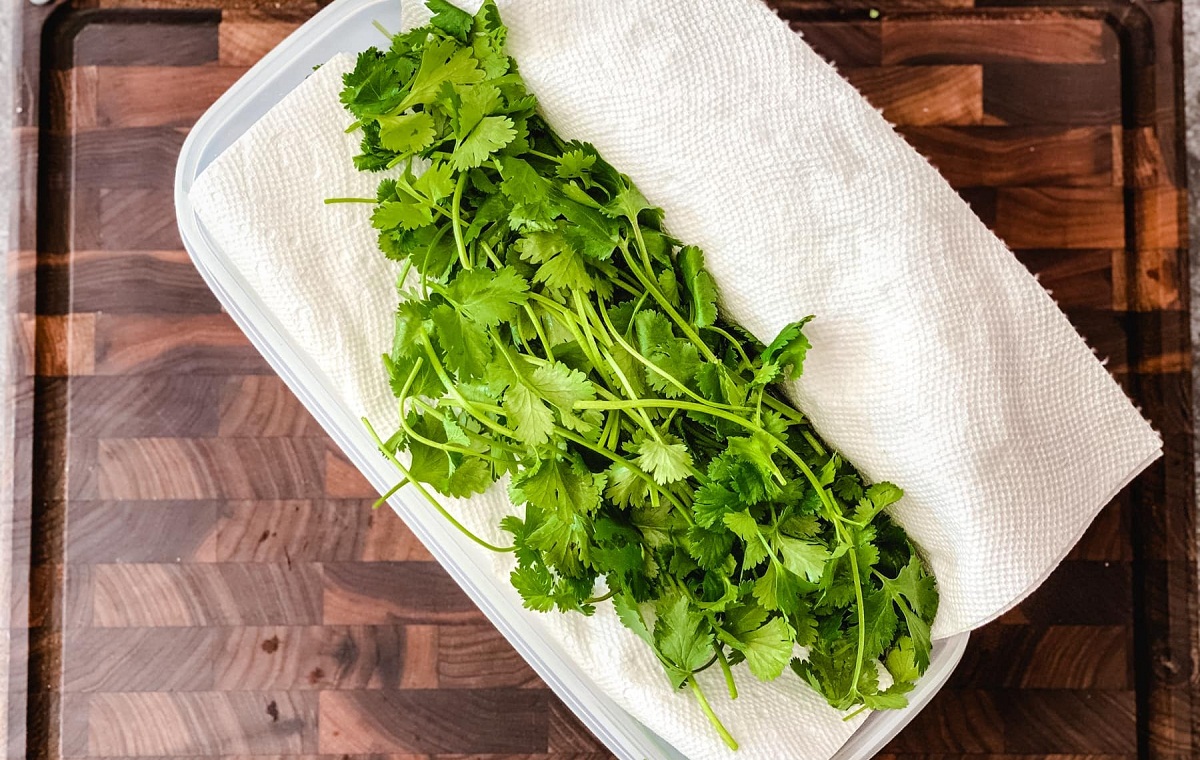
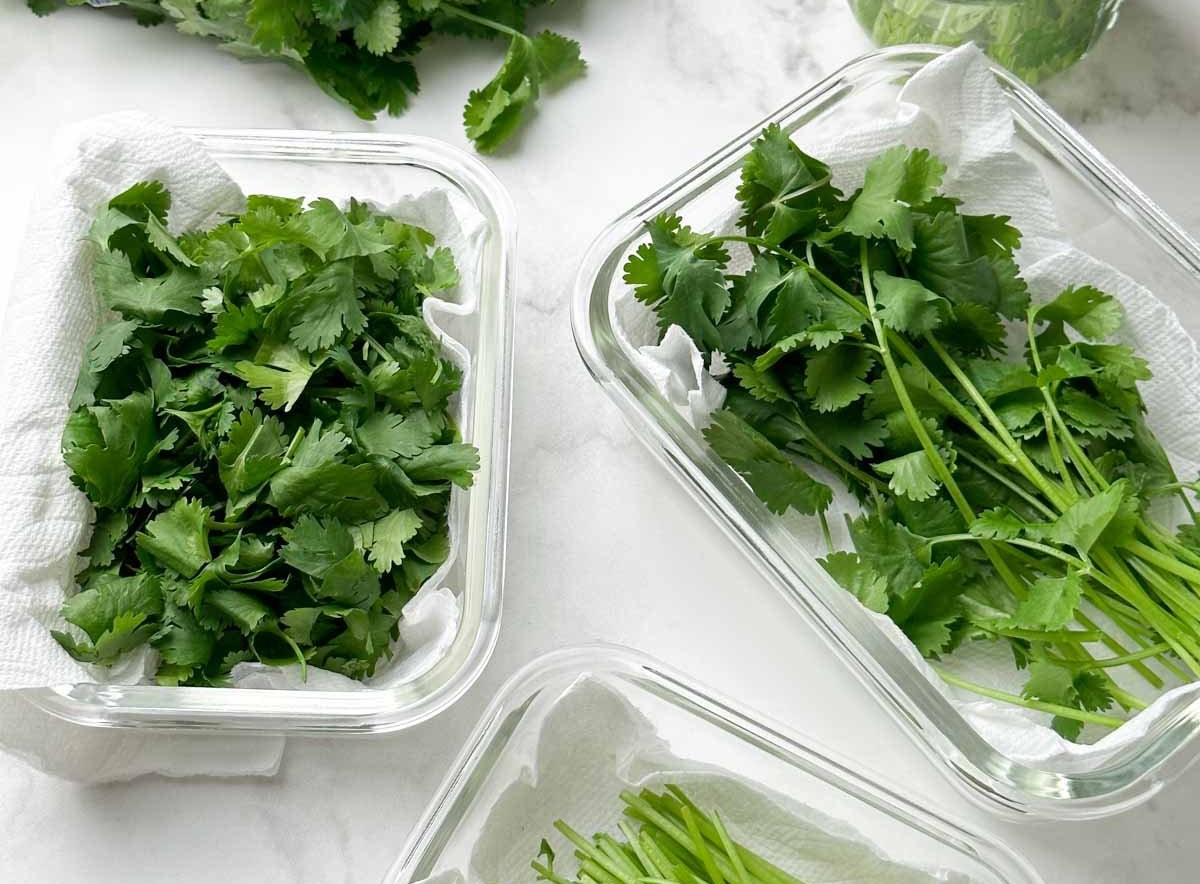
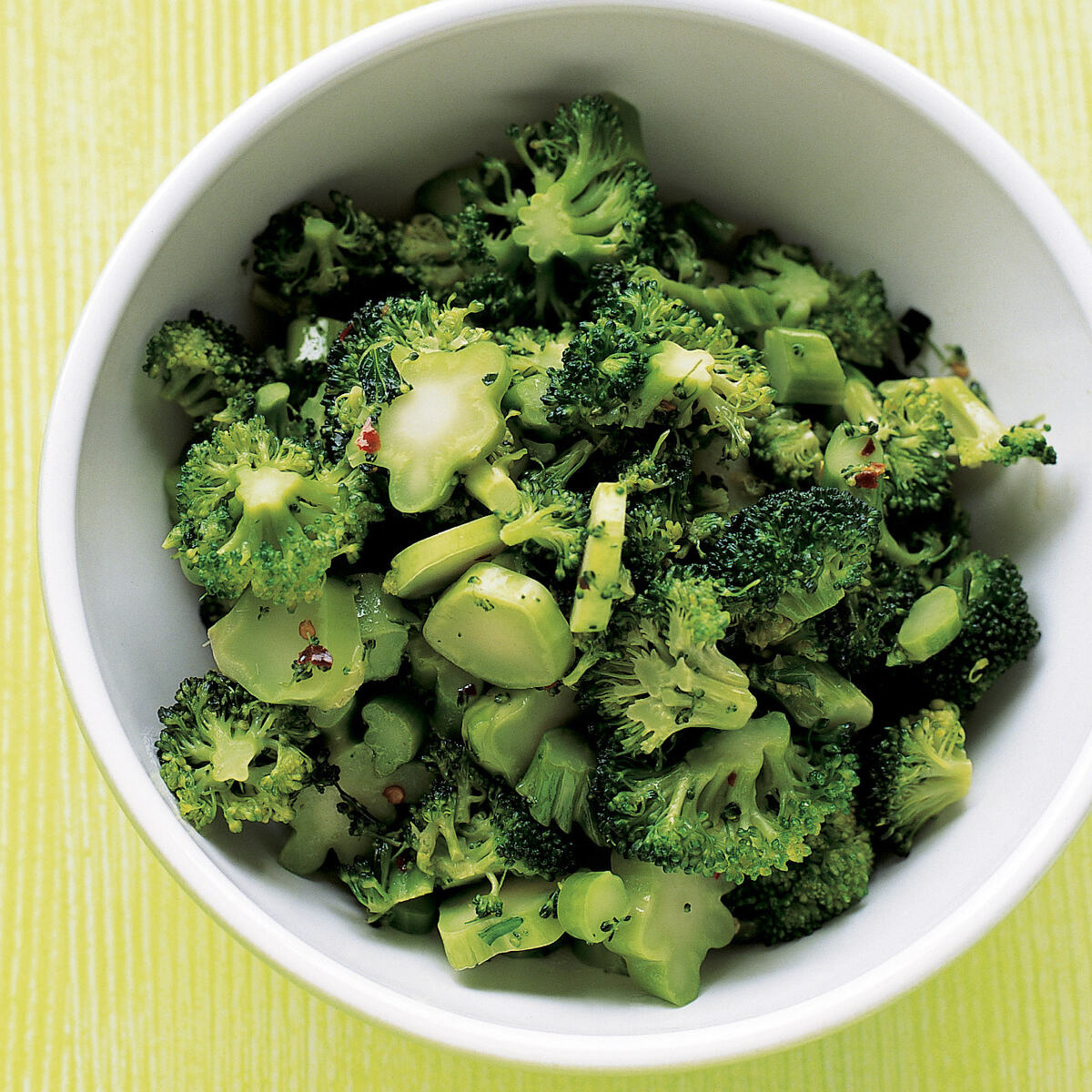
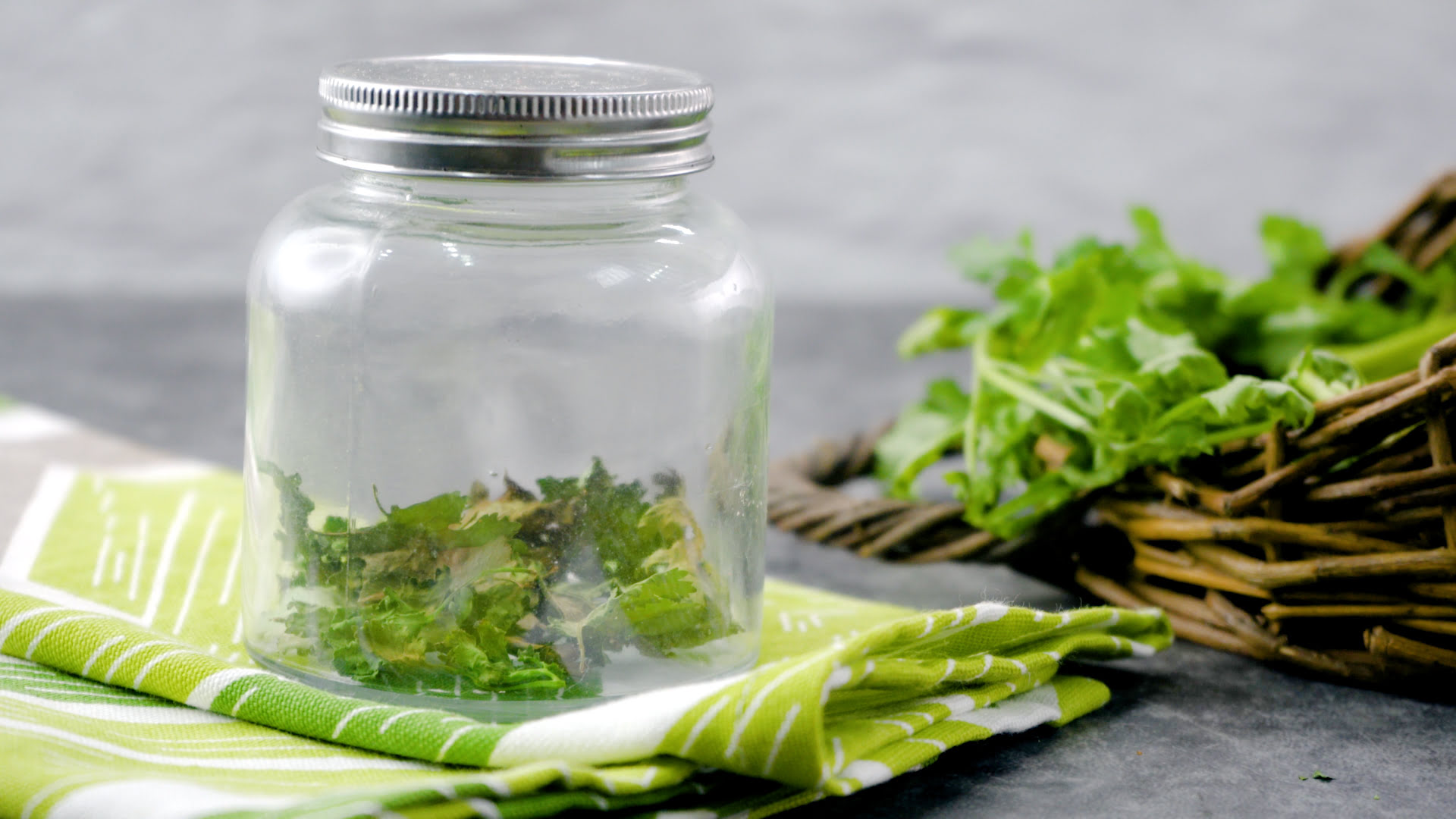
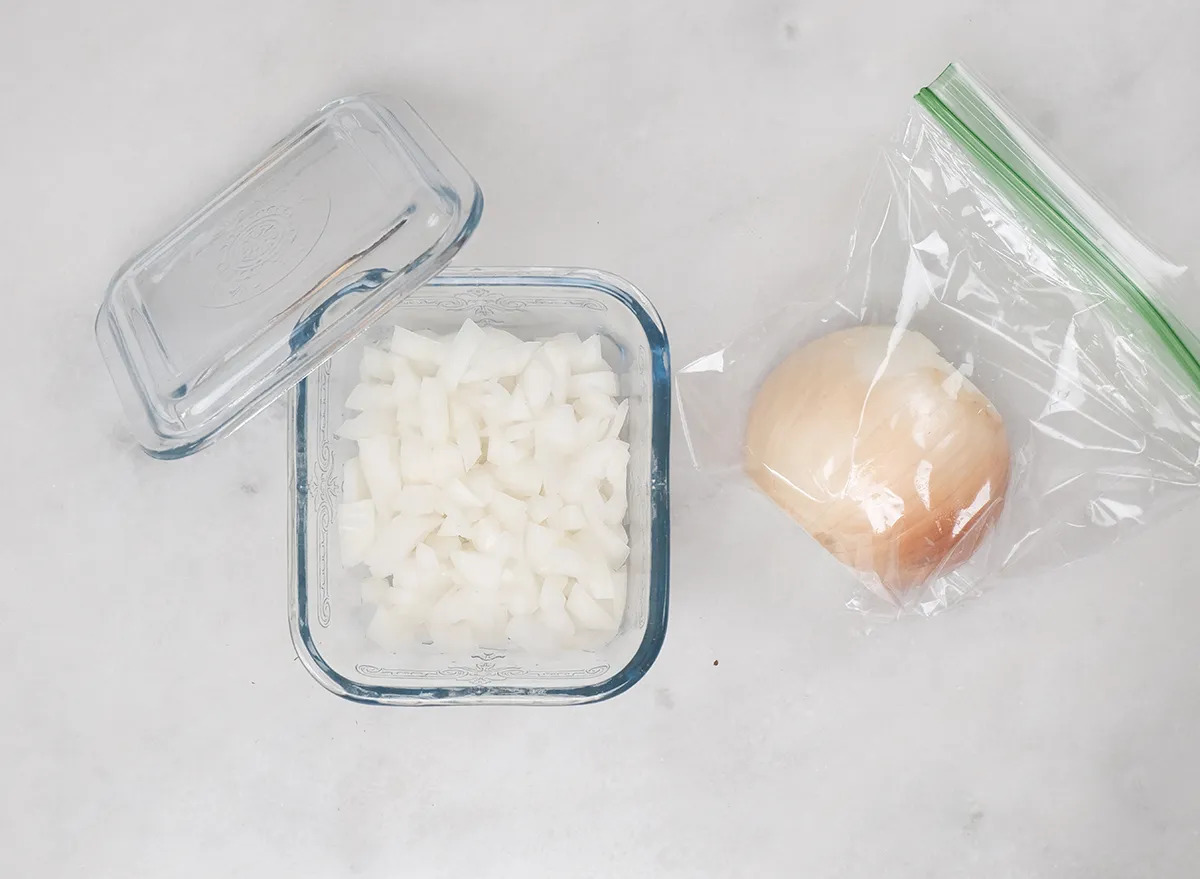
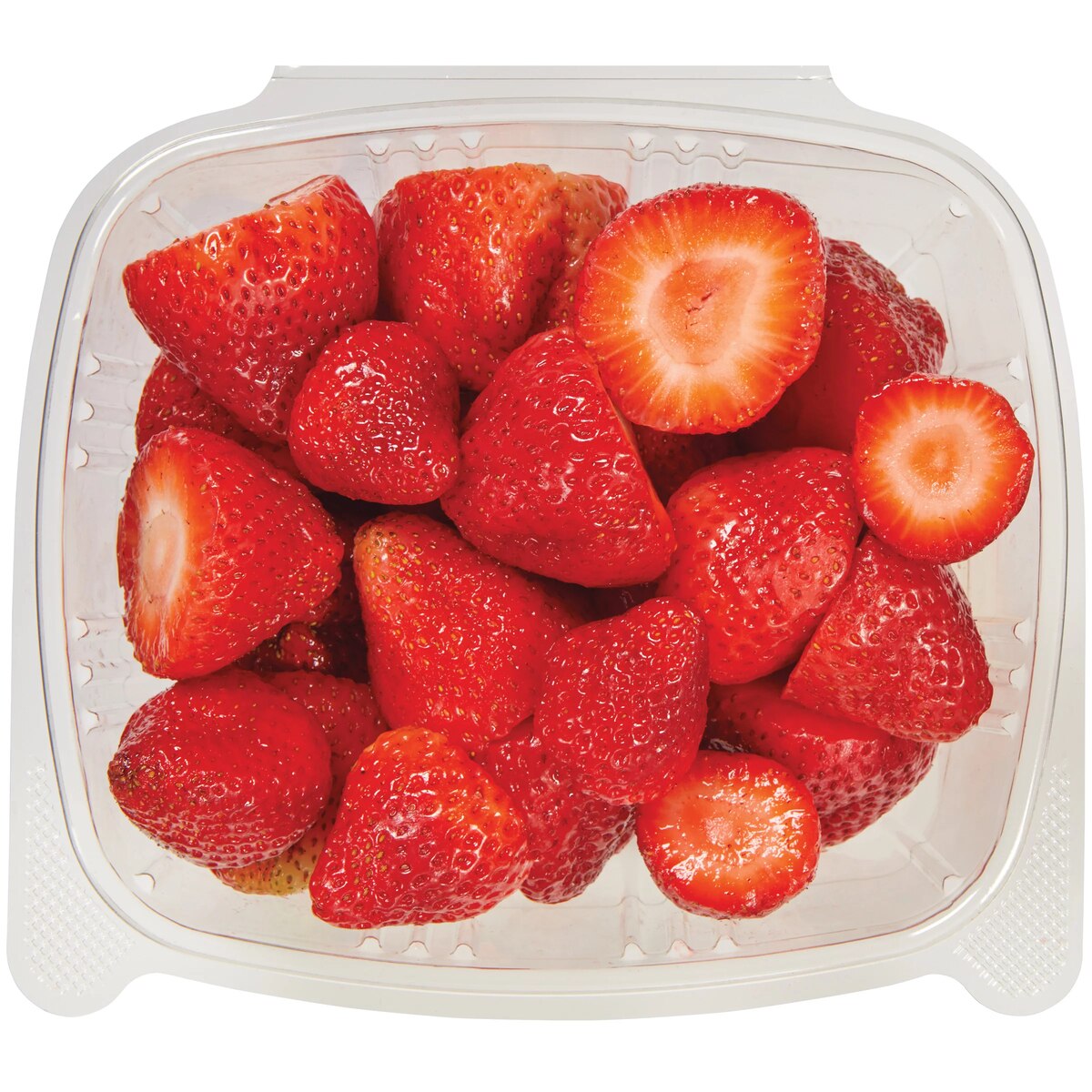
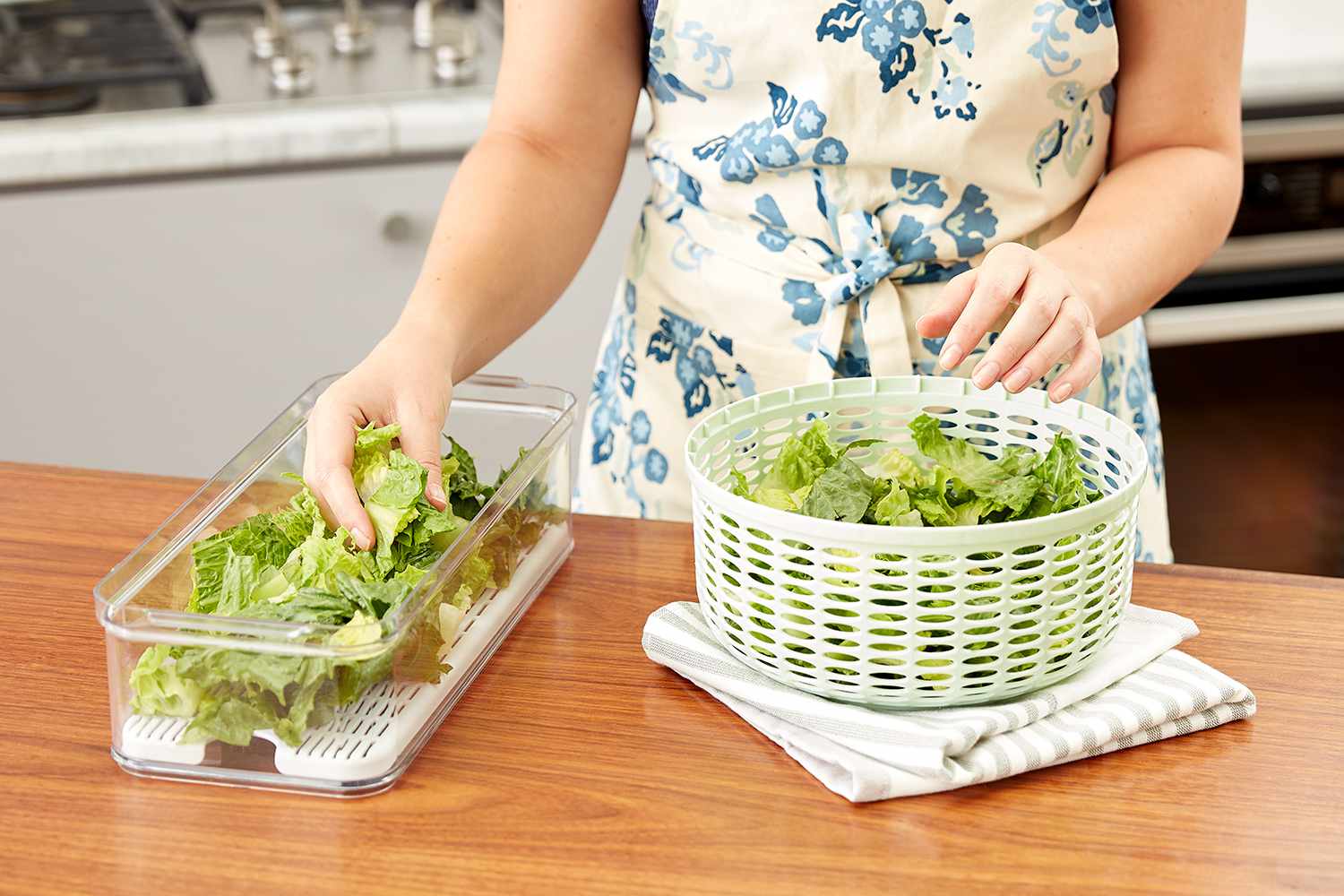
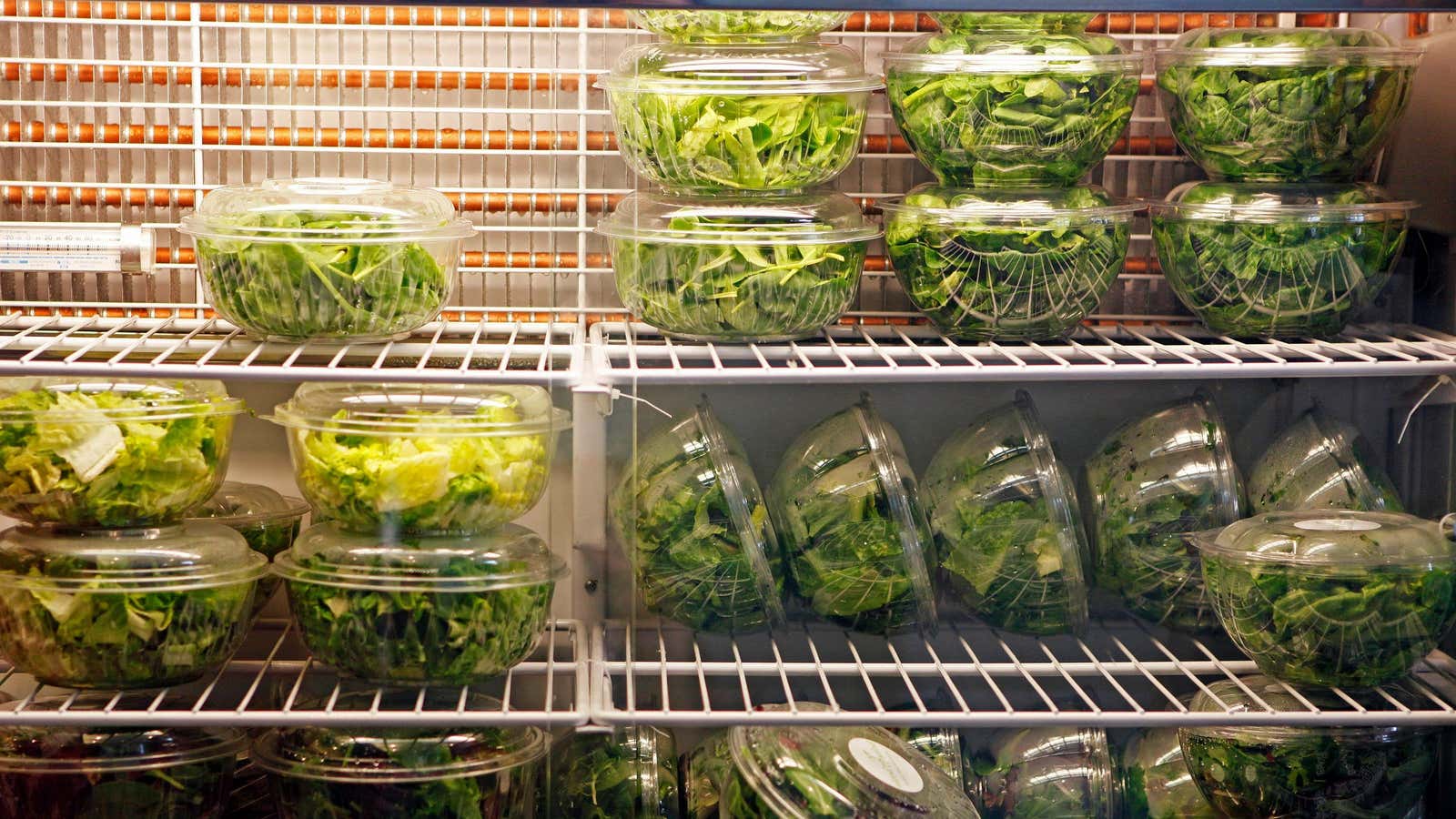
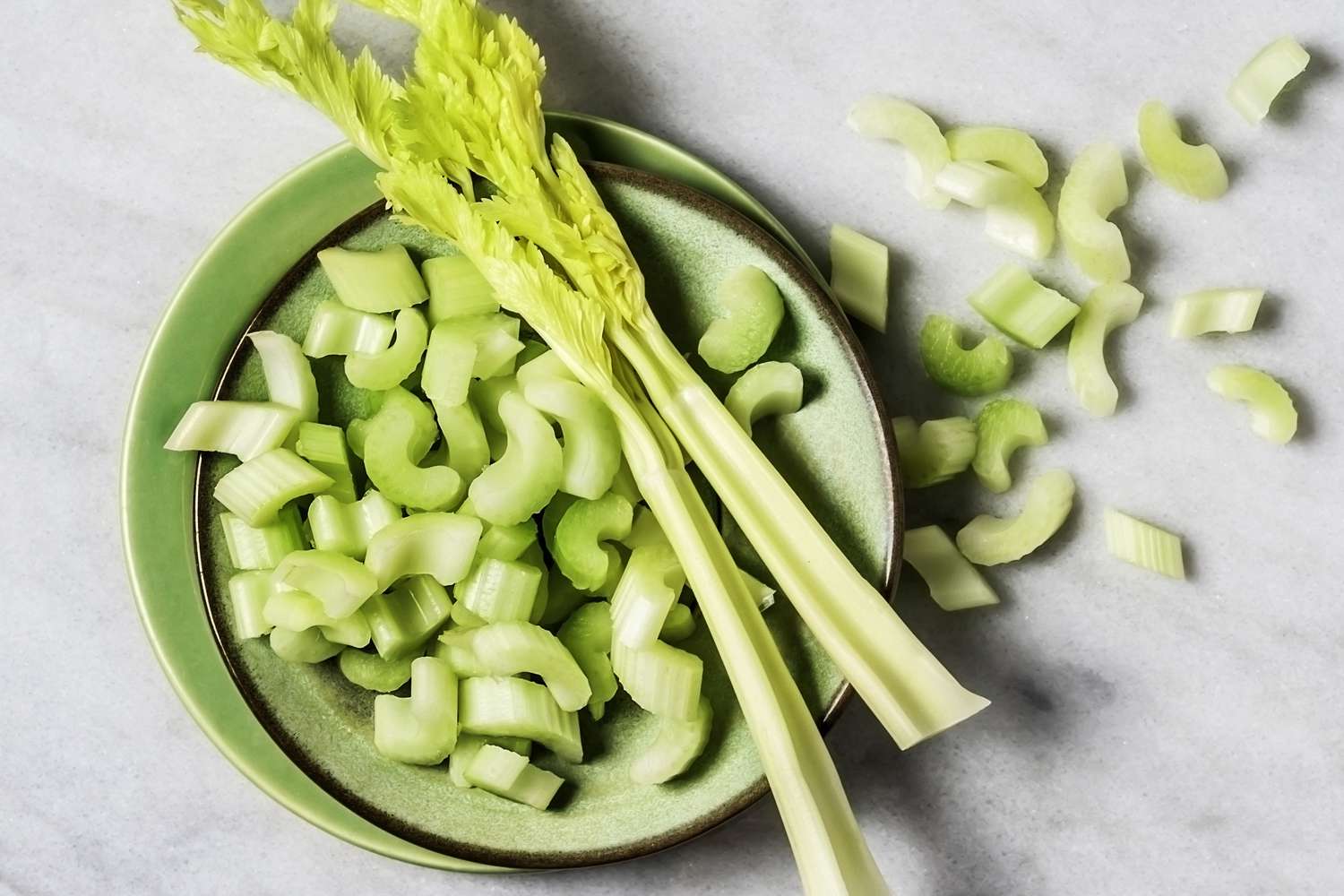
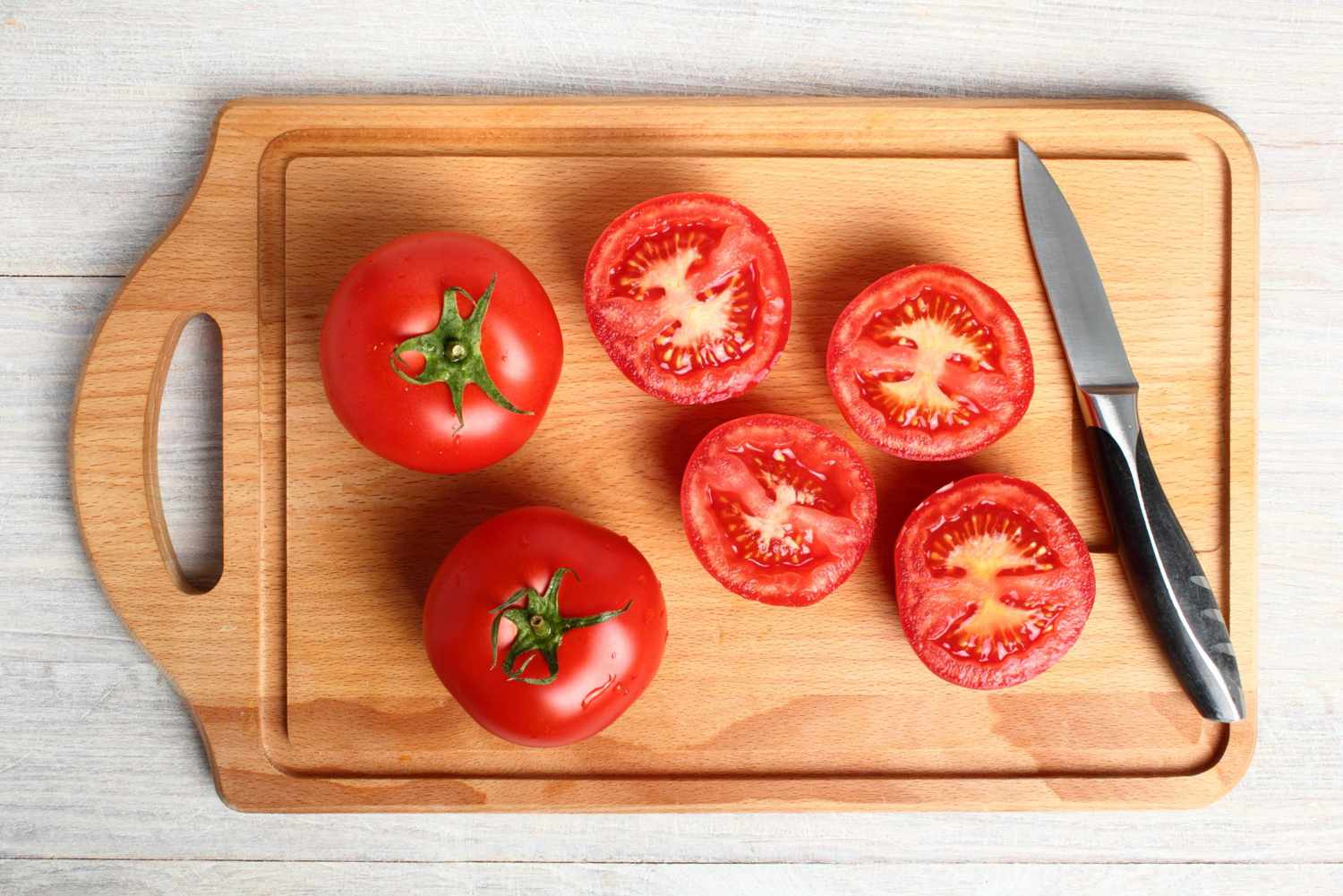

0 thoughts on “How To Store Chopped Cilantro”